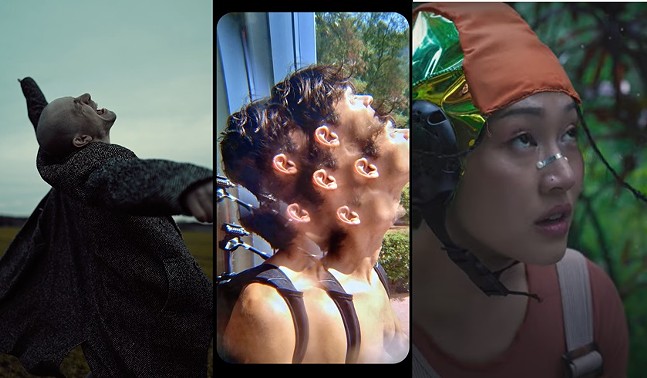Community, Leadership, Experimentation, Diversity, & Education
Pittsburgh Arts, Regional Theatre, New Work, Producing, Copyright, Labor Unions,
New Products, Coping Skills, J-O-Bs...
Theatre industry news, University & School of Drama Announcements, plus occasional course support for
Carnegie Mellon School of Drama Faculty, Staff, Students, and Alumni.
CMU School of Drama
Monday, September 30, 2024
Filmmaking gets vertical during a new festival at Point Park University
Screen | Pittsburgh | Pittsburgh City Paper: Nothing screams “cinema” like the term “widescreen,” which likely conjures up visions of packed theaters and drive-ins, and of larger-than-life wonders that only the movies can provide.
Subscribe to:
Post Comments (Atom)

4 comments:
This was actually a really interesting article. When you think about watching a movie, you think about a widescreen. One thing I didn't know is that many early films were shot vertically. I suppose it makes sense that it took a while before there was a "standard" set. The article talked about a vertical film of a cat from 1894 (which I would love to see). It says that in 1930 a Russian filmmaker advocated for movie screens to have the capacity to display movies at any aspect ratio. However it wasn't long until the Academy adopted a universal widescreen aspect ratio.
But especially today, when everyone is walking around with a vertically oriented screen in their hands, I'm not surprised to see vertical films coming back. It is so easy to make a high quality video on your phone that others can also enjoy watching from theirs, and we have plenty of apps that allow for the widespread sharing of our videos. It is cool to see a festival strictly for vertical films. I think they also evoke a different emotion for the viewer.
Before reading this article I had never thought deeply about the orientation of the camera in films. I know that the picture size changes, but I never questioned why the standard is horizontal orientation. Now that I am thinking about it, it seems silly. Like the article states, many forms of filmed media in the modern day are in the vertical orientation. It makes sense to experiment with the effects of filming vertically rather than horizontally. I can imagine that it would evoke a different feeling from the audience and cause them to perceive it differently, and drastically change the way the cinematographers, designers, and director approach the process of filming. I think that this film festival is a great way to introduce this concept to people and spread the word, especially because important moments in film history have been shot in vertical orientation, and because of the influence of social media on the future of filmmaking.
Vertical filmmaking offers a new lens on how filming could be done. With our digital age so prominent in our lives now, it’s easy to understand why vertical filmmaking might be on the rise. Almost everyone has some sort of smartphone that allows them to be connected 24/7 to the internet or content of some sort for entertainment. What if, we made that content vertical, and not just social media but all forms of content like films and tv series. I think this vertical filming could get some backlash from the general public who have been so used to the widescreen effect of TV and film, but with streaming so accessible now, it’s easy to understand why vertical filming might become the more accepted way to view the medium. It’s really cool that this festival is hosted by Point Park University in downtown Pittsburgh and that the ticket sales will go to the Community Food Bank. I also thought it was interesting that the vertical films that will be highlighted at the festival are from New Zealand, an improvised musical piece playing with refracted images and an Indonesian film. Overall, vertical filmmaking could be a new era for TV and film in the States.
I appreciate the experimentation in film but I don’t think vertical looks the same way horizontal does. Composition works better horizontally, and although good composition can exist on a horizontal screen, it’s much harder to pull off. When I take photos, I try to limit my vertical photos. They’re better for isolating people because you can capture the whole person and very little of their surroundings, but for an entire film, that feels like something you don’t want. The background is a very important part of the film. It helps with setting, it can be used for plot, and it overall helps bring the film to feel more real and not ‘staged’. Would a vertical Wes Anderson movie still be able to have the same effect?
On the other hand, breaking conventions is a huge part of film. Horizontal videos definitely have a more “modern” feel to them because of the rise of phones. When done well, a horizontal video is incredibly impressive and can work nicely.
Post a Comment